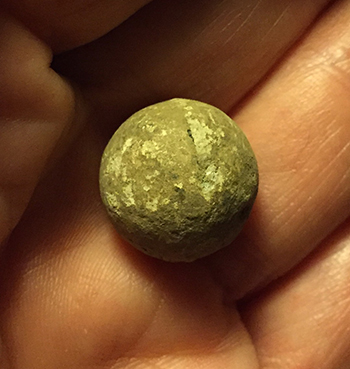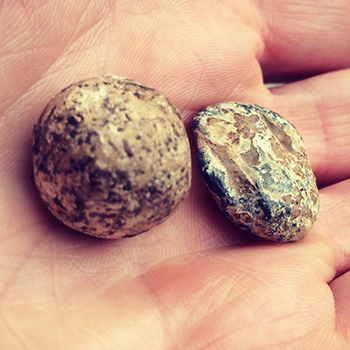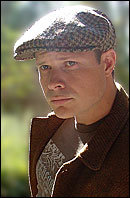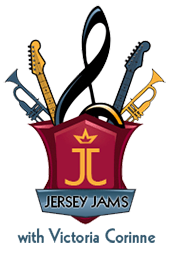
Found on a property that was once home to a bunch of Revolutionary War soldiers fighting for independence, this musket ball still has the seam visible, which only added to its inaccuracy I’m sure!
As one of the original colonies, it’s not surprising that New Jersey was a critical player in the American Revolution. Geographically located between New York and Philadelphia, surrounded by major waterways like the Hudson and Delaware Rivers, it’s understandable why New Jersey is known as the crossroads of the American Revolution. Just look at a map of the east coast of the United States – we’re smack in the middle.
Those of us who love the Garden State and make it our home know it well for its mountains, farmland, wetlands, Pine Barrens, and our Jersey Shore. It’s got just about everything a state can ask for! But during the American Revolution, and without the modern conveniences we depend on, it was a challenging state to endure. Hot summers and brutally cold winters beat down even the fiercest of warriors. Add to that scarce food, supplies, and adequate clothing, it’s hard to imagine surviving even without the brutal skirmishes and battles.
When I search for relics, the one item above all that makes me pause and think about a soldier’s life and how difficult it must’ve been is the musket ball. Primitive (compared to modern ammunition), heavy, and inaccurate it must’ve been terrifying in between taking a shot and going through the numerous steps to reload just one round.
Let me state first that I am not an expert on arms and munitions, but I know a little about musket balls. The British used larger ones than the Patriots, and when in short supply the soldier’s often made their own with whatever they could melt down. Most musket balls are made from lead, and they are heavy, not purely round as they were pressed together. Many of the ones I find you can still see the seam.

In my hand holding a dropped musket ball (original roundish shape) a shot musket ball, which flattened due to impact. Although only the size of a marble, these lead projectiles are very heavy for their size!
As I noted earlier, they weren’t very accurate. A soldier would get as close as possible to his target before shooting. The shot through the air like knuckle balls, as if ricocheting off invisible walls. If they made an impact, whether it be rock or bone, they would flatten. I’m always surprised, for some reason, by their heaviness every time I hold one.
I have the privilege of searching a local home, built in 1750, that was the site of a Revolutionary War base camp. It’s also believed that George Washington himself stayed there at least one night. While my searching isn’t complete, I did recover a musket ball from the property. I believe it was dropped and not shot, since it’s still seemingly in its original shape, complete with the telltale seam of two halves being pressed together.
While I have found other relics from the property from the similar time period, there is nothing better than a musket ball to incite visions of a Revolutionary War soldier.
If you’re interested in learning about the Revolutionary War in your neck of New Jersey, I highly recommend you visit the aptly titled website Revolutionary War New Jersey. It has information for every county, as well as some great information so you can learn more about how New Jersey played a major role in turning the British Colonies into the United States of America.
 Grant Hansen is an avid relic hunter, and focuses most of his efforts in his home state of New Jersey. He and his detecting partner James run http://relic-hunters.com and work with local and national historical societies and museums to preserve lost history. Some of the best finds Grant has made is the people he’s met and befriended along the way. It’s the kindness and generosity of property owners that makes it possible for him to pursue his passion. These articles are dedicated to these special people.
Grant Hansen is an avid relic hunter, and focuses most of his efforts in his home state of New Jersey. He and his detecting partner James run http://relic-hunters.com and work with local and national historical societies and museums to preserve lost history. Some of the best finds Grant has made is the people he’s met and befriended along the way. It’s the kindness and generosity of property owners that makes it possible for him to pursue his passion. These articles are dedicated to these special people.



































